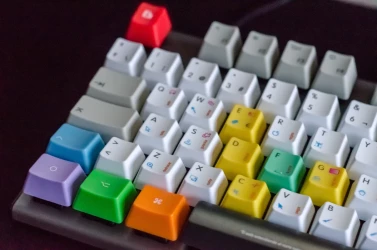Hello,
as I said in my other post about useful tips on how to improve your workflow in Hammer I will now continue my small guide about that. In my first post, I mainly talked about how you can improve your workflow by tweaking some settings in Hammer.
But another important thing for a good workflow is shortcuts besides good preferences in Hammer.
I want to give you some tips for the best Hammer settings after my experience. I ignored most of the settings in Hammer for a long time, but if you spent a bit of time optimizing and customizing Hammer for your personal style of working you can work much better and faster with it.
I will give you a few simple steps to improve your workflow but don't forget the most important one is practice and this you just get by doing, and maybe you have made some other experiences or thoughts on how to improve your workflow. When fell free to write them in the comments or send me a mail.
Plan your map before you start in Hammer, which reduces your idle time at the keyboard and reduces the risk to rework things. So that you can spend all your time in the editor at maximum speed!
Compiling costs time! Try to reduce your compile-time and compile just these parts of the map you are currently working on (use the Cordon tool) and just compile vis and rad if you really need it. For Brushwork and layout tests a .bsp only compile is enough.
Use the Cordon tools! You should not just use the Cordon tools for compiling it is also wise to use them to select the parts of the map you are currently working on. This creates a much clearer 2D view and improves the Hammer performance.
Take notes if you find bugs so that you remember them if you want to fix them later or on the next day.
Use shortcuts as often as possible and don't waste time on moving your mouse around. You can watch them on Valves wiki. To better learn them I created and printed myself a Hotkey_Reference.pdf that makes it easier to look at them.
Set up your displacements wisely. Plan them before that will save a lot of time than optimize them later on.
Paint displacements in the face normal mode. You can change the axis from the face-normal by alt+right click on a face or displacement vertex. So you will waste less time on painting the displacements.
Use visgroups wisely. Turn off models or tool textures and co every time you are not working with them because they often just block your view so that you have to waste time moving around them and so on.
Create your own visgroups and call them wisely this will help you to make your map more clear and help teammates who are maybe working on your map to understand your work.
Optimize your map from time to time and make complex brushes to func_details and reduce the lightmap scale there ever you can. This will reduce your compile times.
Create Prefabs for things you use often in your map (in newer SDK versions you should use instances). This needs less time than creating these things every time again or copying them.
Create Brushes first with a nodraw texture applied, and texture just the sides that are visibly in the map later.
Activate Snap to Grid under Map in the upper toolbar.
Work on a 16 grid. And 8 - 4 grid for details and only us a finer grid if it is really necessary.
Don't use the carve tool.
Displacements must sew. Check if everything is sewed correctly before compiling.
I hope these few tips will help you to improve your workflow. If you have made different experiences or have some other tips, I would really like to get some feedback from you ;)
So far greets from my side and bye for now :>
